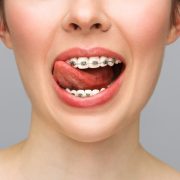Common Orthodontic Problems in Kids
Regular dental care is important for adults because it helps maintain a healthy, beautiful smile and prevents chronic dental conditions. However, it may be even more important for our pediatric patients. Young children need regular trips to the dentist for early detection of many common orthodontic issues. Your pediatric orthodontist in Solon, OH, can help with three orthodontic problems regularly seen in young patients.
Abnormal Tooth Eruption
Abnormal tooth eruptions occur when a permanent tooth grows through the gum in the wrong place. Often, this happens because a baby tooth was lost prematurely and did not hold the empty space for the permanent tooth to grow in. However, many factors may contribute to an abnormal tooth eruption, including losing a baby tooth too late, having a very small mouth, or having more or less than the usual 20 baby teeth. An abnormal tooth eruption may correct itself eventually, or it may require repositioning by your child’s orthodontist.
Tooth Crowding
As your child’s permanent teeth begin to erupt, you may notice that they overlap, grow in crooked, or may twist or rotate out of position. This is a sign of overcrowding, and it’s caused by too many teeth in too little space. Sometimes, genetics play roles in overcrowded teeth. Or other factors, such as injury or excess teeth may be to blame.
Overcrowded teeth in childhood must be corrected because it makes proper brushing and flossing more difficult. It may also affect your child’s self-esteem, and it may cause bigger problems, such as malocclusion, as your child grows older.
Crossbite
Crossbites happen when an upper tooth lands inside a lower tooth when your child’s mouth is closed. This is usually fixed by wearing a device called a palatal expander. Call McGuire Orthodontics and Facial Orthopedics when your child needs a pediatric dental appointment in Solon, OH.












